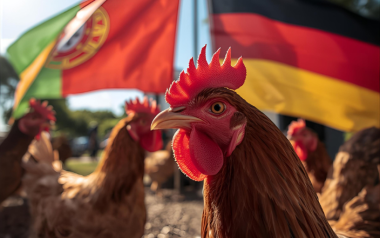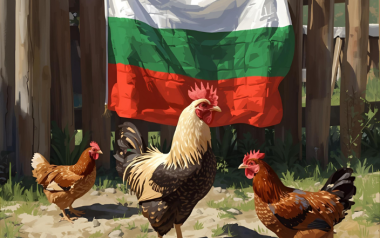Sources: Available upon request.
02 Mar 2024
Avian Influenza reaches Antarctica and penguins are at risk
Although avian influenza has been present in all continents except Australia, its arrival in Antarctica is of concern due to the vulnerability of penguins to climate change.
Although avian influenza has been present in all continents except Australia, its arrival in Antarctica is of concern due to the vulnerability of penguins to climate change.
After several suspicions due to the mortality of birds on several antarctic islands, a teamwork between spanish and argentine scientists confirmed the presence of avian influenza in Antarctica. According to the scientists, a deadly strain of avian flu was detected for the first time in continental Antarctica, raising concerns about the risk of mass mortality of the continent’s huge colonies of penguins and other animals found nowhere else on Earth.
The finding
- Researchers confirmed on February 24 the presence of the H5 subtype of avian influenza in two dead seabirds, called skuas (Stercorarius skua), near an argentinean base and scientific research station located on the antarctic peninsula, according to the Consejo Superior de Investigaciones Científicas (CSIC).
- The finding demonstrates for the first time that the highly pathogenic avian influenza virus has reached Antarctica, despite the distance and natural barriers that separate it from other continents.
- In recent years, this highly infectious disease has devastated wild and domestic animal populations, making its way across the globe via bird migration routes.
- Now, the arrival of avian influenza in the southernmost continent threatens its unique wildlife, including its iconic penguins.
The virus is potent enough to jump from birds to mammals, hitting elephant seals and other aquatic mammals that congregate along the coast. It has reached every continent except Australia.
For farms, the global outbreak is a high economic cost as the virus kills millions of chickens and other poultry. In the wild, the disease threatens to disrupt ecosystems and bring threatened birds closer to extinction.
Regarding penguins
- Penguins in Antarctica most likely do not have much immunity to the disease, as the presence of the virus on the continent has not been documented until now.
- Outbreaks among penguins in South America and Africa demonstrate their vulnerability.
- These birds, which like to walk together in colonies, are not very good at social distancing.
- Many Antarctic penguins are already at risk of disappearing as rising temperatures deplete the sea ice they need for feeding, breeding and defense.
- In 2022, the U.S. Fish and Wildlife Service declared that the continent’s emperor penguins are at risk of extinction due to climate change.
The CSIC said scientists obtained samples from the two dead skuas using “maximum security measures to avoid transmission of the virus to humans”, sending them by ship to the spanish base on Deception Island for analysis.
Avian flu has been creeping towards the mainland for months. In recent weeks there have been other suspected cases of bird flu in Antarctica, according to the Scientific Committee on Antarctic Research. For many scientists, its arrival was inevitable.
In October 2023, british scientists discovered the virus in brown skuas about 1,000 kilometers from Antarctica, on Bird Island in the british territory of South Georgia and the South Sandwich Islands. And in January 2024, in the Falkland Islands off the coast of Argentina, researchers detected the flu in Gentoo penguins for the first time. Another 35 penguins were found dead or showing flu symptoms.







































